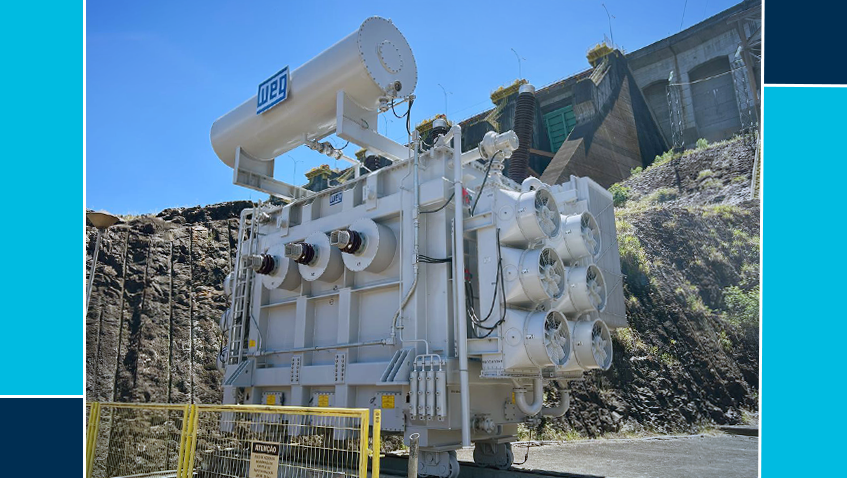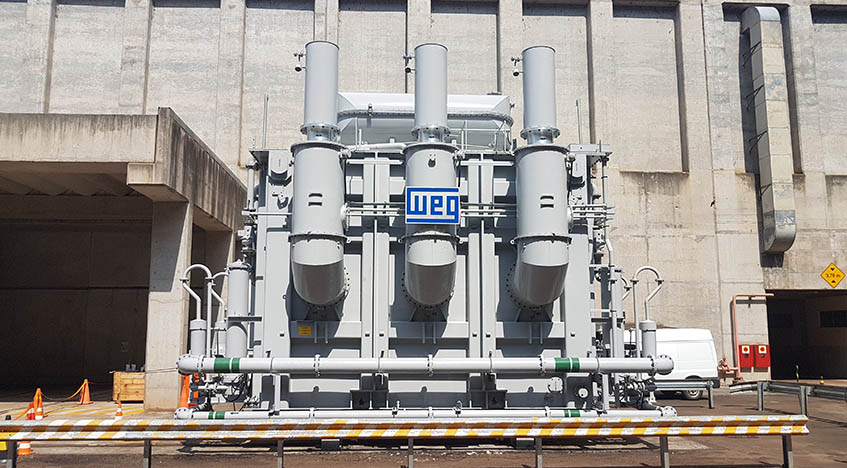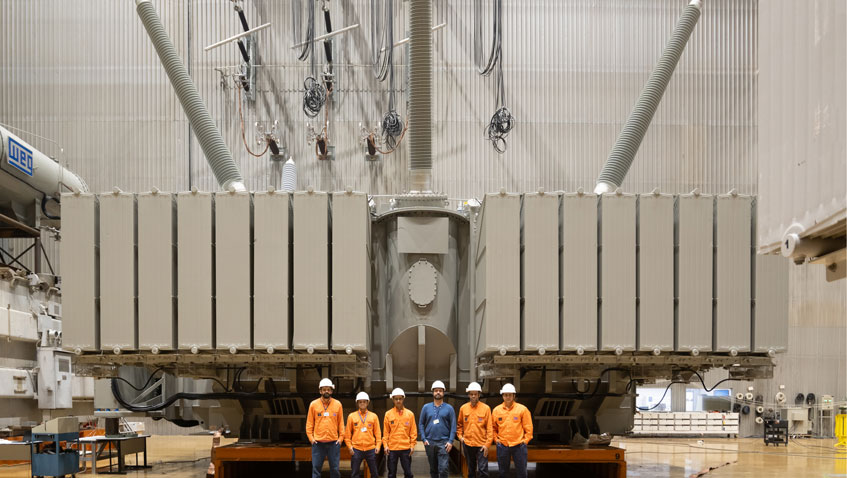In the electricity generation infrastructure, transformers play a fundamental role in order to meet various residential, commercial and industrial demands. However, due to prolonged use and harsh operating conditions over time, this equipment inevitably wears out. In these situations, the transformer repair service is essential to extend its life and optimize energy efficiency.
In this context, WEG performed the renewal service of a 210 MVA power transformer and 230/13.8 kV – with voltage-free switch, manufactured in 1975 and which had been in operation since then. The equipment belongs to the customer ENGIE and is part of the Salto Osório Hydroelectric Plant, located in São Jorge d'Oeste, state of Paraná, Brazil.
In the repair process, worn components are restored and defective parts are replaced, resulting in revitalized transformers ready to offer performance equivalent to new ones. The services performed included cleaning of the active part, modernization of the central oil channel system, drying of the active part in a temperature-controlled Vapor Phase (VP) system. In addition, the tank was shot-blasted and painted, in WEG's own machining department, as well as rigorous inspection processes and performance tests in an internal laboratory under international standards. Thus, ensuring safe and reliable operation, essential to avoid interruptions in the electrical supply.
In high-power transformers such as this one, the importance of using the Vapor Phase in the process of completing the transformer repair is fundamental. During this step, the active part of the transformer is heated to a temperature of 85°C. This is essential, since the temperature distribution in the insulation is important for the quality of drying, which must occur with a uniformly distributed temperature, internally and externally in the insulation. The active part is then tightened again and placed in the tank, where the transformer is vacuum-sealed and filled with new oil.
In addition to the attractiveness of transformer repair due to a reduced investment compared to a complete replacement of a new product, there are also other strengths such as the positive impact on energy efficiency and customization. Each transformer can be adjusted to the specific needs of the customer, considering load characteristics, environmental conditions and efficiency criteria, ensuring that the repaired equipment operates reliably within the electrical system in which it is inserted.



